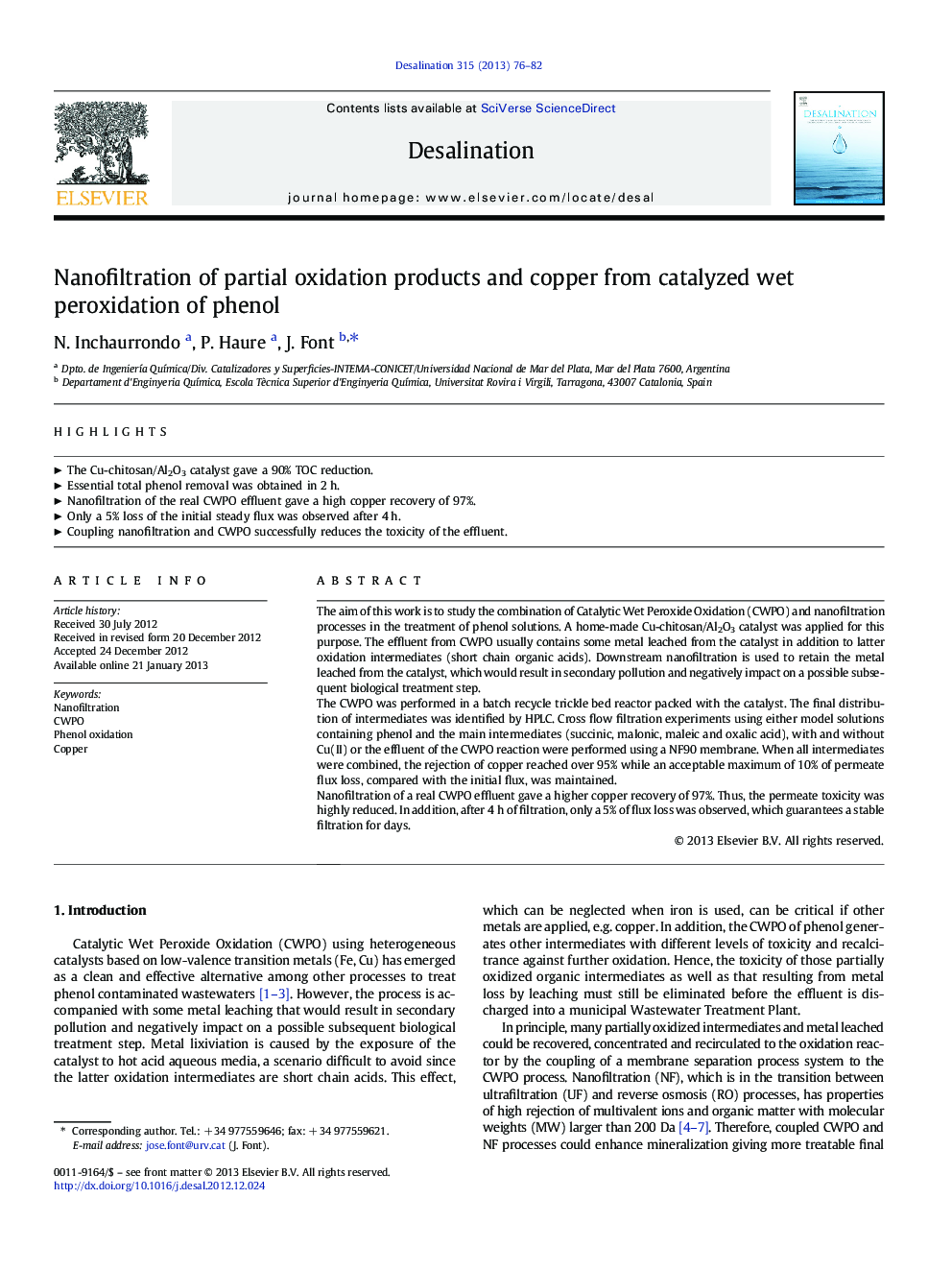| کد مقاله | کد نشریه | سال انتشار | مقاله انگلیسی | نسخه تمام متن |
|---|---|---|---|---|
| 623834 | 1455376 | 2013 | 7 صفحه PDF | دانلود رایگان |

The aim of this work is to study the combination of Catalytic Wet Peroxide Oxidation (CWPO) and nanofiltration processes in the treatment of phenol solutions. A home-made Cu-chitosan/Al2O3 catalyst was applied for this purpose. The effluent from CWPO usually contains some metal leached from the catalyst in addition to latter oxidation intermediates (short chain organic acids). Downstream nanofiltration is used to retain the metal leached from the catalyst, which would result in secondary pollution and negatively impact on a possible subsequent biological treatment step.The CWPO was performed in a batch recycle trickle bed reactor packed with the catalyst. The final distribution of intermediates was identified by HPLC. Cross flow filtration experiments using either model solutions containing phenol and the main intermediates (succinic, malonic, maleic and oxalic acid), with and without Cu(II) or the effluent of the CWPO reaction were performed using a NF90 membrane. When all intermediates were combined, the rejection of copper reached over 95% while an acceptable maximum of 10% of permeate flux loss, compared with the initial flux, was maintained.Nanofiltration of a real CWPO effluent gave a higher copper recovery of 97%. Thus, the permeate toxicity was highly reduced. In addition, after 4 h of filtration, only a 5% of flux loss was observed, which guarantees a stable filtration for days.
► The Cu-chitosan/Al2O3 catalyst gave a 90% TOC reduction.
► Essential total phenol removal was obtained in 2 h.
► Nanofiltration of the real CWPO effluent gave a high copper recovery of 97%.
► Only a 5% loss of the initial steady flux was observed after 4 h.
► Coupling nanofiltration and CWPO successfully reduces the toxicity of the effluent.
Journal: Desalination - Volume 315, 15 April 2013, Pages 76–82